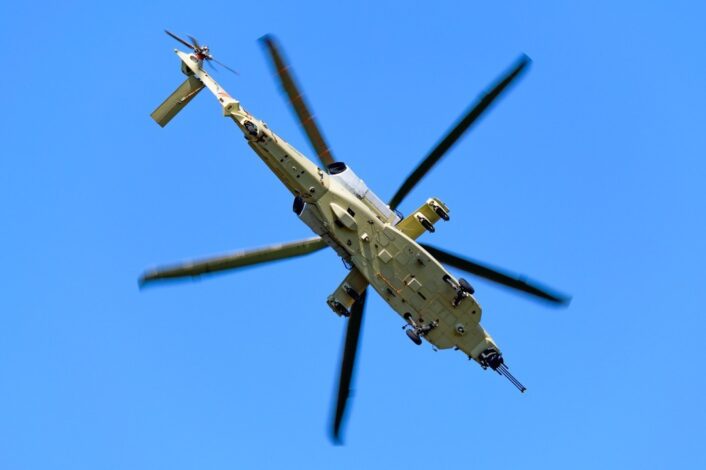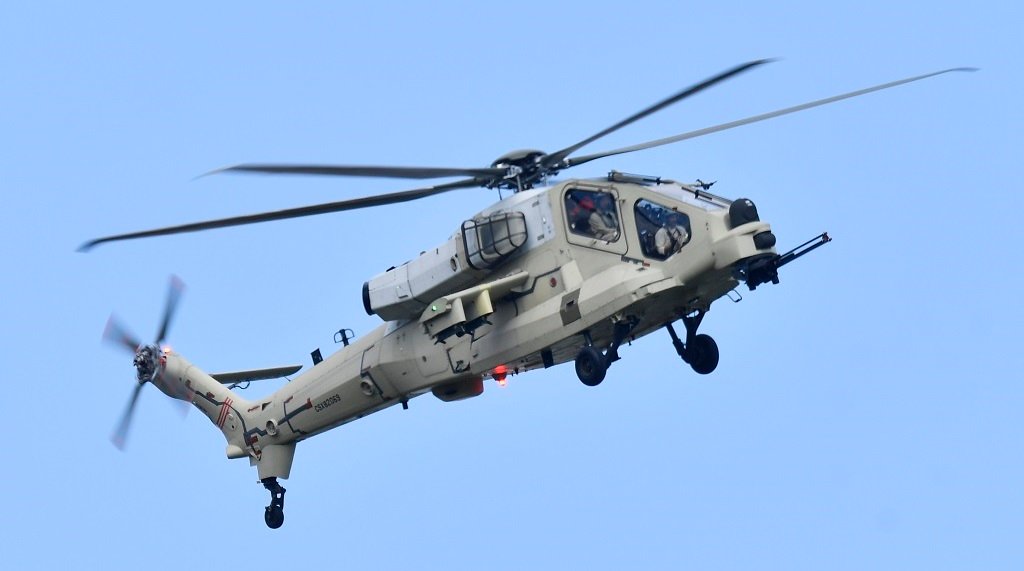[ad_1]

A month after the first flight, the testing is progressing to expand the AW249’s flight envelope.
A month after its first flight, the new Leonardo AW249 NEES (Nuovo Elicottero da Esplorazione e Scorta / New Exploration and Escort Helicopter), is in the middle of an extensive flight test campaign. As we already reported, the helicopter was expected to fly for the first time this month but, in the end, it performed the maiden flight from the Leonardo Helicopters plant in Vergiate, on Aug. 12, 2022.
The helicopter is still flying with just its primer paint and the experimental serial CSX82069. On the fuselage and tail boom we can see some lines created with grey and red tape, with the latter possibly being used to attach strain sensors on the surface to monitor the stress on the airframe during the flight. Also, the helicopter has already been equipped with the TM197B 20 mm cannon and the Rafael Toplite targeting system inherited from the Mangusta.
The helicopter will replace the AW129 Mangusta, which has been in service with the Italian Army since the 1990s and upgraded throughout the years until the current AH-129D variant. Many are considering the AW249 as a copy of the AH-64 Apache, however the two helicopters have very little in common, besides the tandem cockpit configuration. The AW249 is, in fact, an evolution of the AW129, which was originally designed in the late 1970s as A129 and first flew in 1983. By the way, the tandem cockpit configuration doesn’t even date back to the Apache, but to the AH-1 Cobra.
Leonardo has been working on the project since 2017, when the Italian Ministry of Defence initiated the NEES program, which includes one prototype, three pre-serial production helicopters and a need for up to 48 operational helicopters. While at Farnborough air show, Stefano Villanti, senior vice-president of sales at Leonardo Helicopters, said development of the AW249 has been “progressing like clockwork” against the Italian Army’s timeline. The Army plans to retire the AH-129 from 2025.

The photos you can see in this article were captured on Sept. 9, when the helicopter reportedly performed a 30-minute flight over Vergiate’s plant. Other than the first prototype which is already flying, sources say that a second helicopter might roll out this month and join the flight testing. Leonardo Helicopters is currently not commenting on the AW249 testing, citing customer confidentiality.
Looking at the photos, it appears the helicopter is still flying in the same exact configuration as in the maiden flight, without noticeable changes. It should be expected that, further down the test campaign, more equipment will be added to reflect a configuration closer to the operational one, as well as any tweaking deemed necessary to correct possible shortcomings discovered during testing.

“The AW249 meets emerging requirements for a latest generation combat helicopter to operate in a rapidly evolving battlespace over the next 30 years”, according to the manufacturer’s website. “The only new combat helicopter currently in design, it will combine advanced technologies, outstanding performance and high survivability, together with low operating costs.”
As we just mentioned, the AW249 will be tailored to the future battlespace. In order to adapt to the rapidly evolving scenarios, the helicopter will fuse open systems architecture to allow quick upgrades and growth capabilities, state-of-the-art communications and an advanced battlespace management system. Also, because of the increasing need to team with other platforms in network-centric operations, the AW249 will feature manned-unmanned teaming (MUM-T) capabilities.

The helicopter is powered by a pair of GE Aviation CT7-8E6 (T700) turboshaft engines, rated at 2,500hp (1,860kW) each and also includes dynamic components from the AW149 transport helicopter. The AW249 has been designed with a maximum take-off weight (MTOW) within the range of 7,500 – 8,000 kg (about the double of the AW129’s MTOW), with the ability to operate in both hot-and-high and cold weather conditions, with a cruising speed of 140kts and a three-hour endurance. The helicopter has been designed also with ship-borne operations in mind.
The AW249, thanks to its MTOW, features a weapon payload which is reportedly doubled compared to the Mangusta. Six wing stations will be able to load air-to-ground and air-to-air missiles, unguided/guided rockets and external fuel tanks, in addition to the nose mounted 20 mm cannon. Like the cannon and the targeting system, the AW249 will also inherit the Spike anti-tank guided missiles.
[ad_2]
Source link
